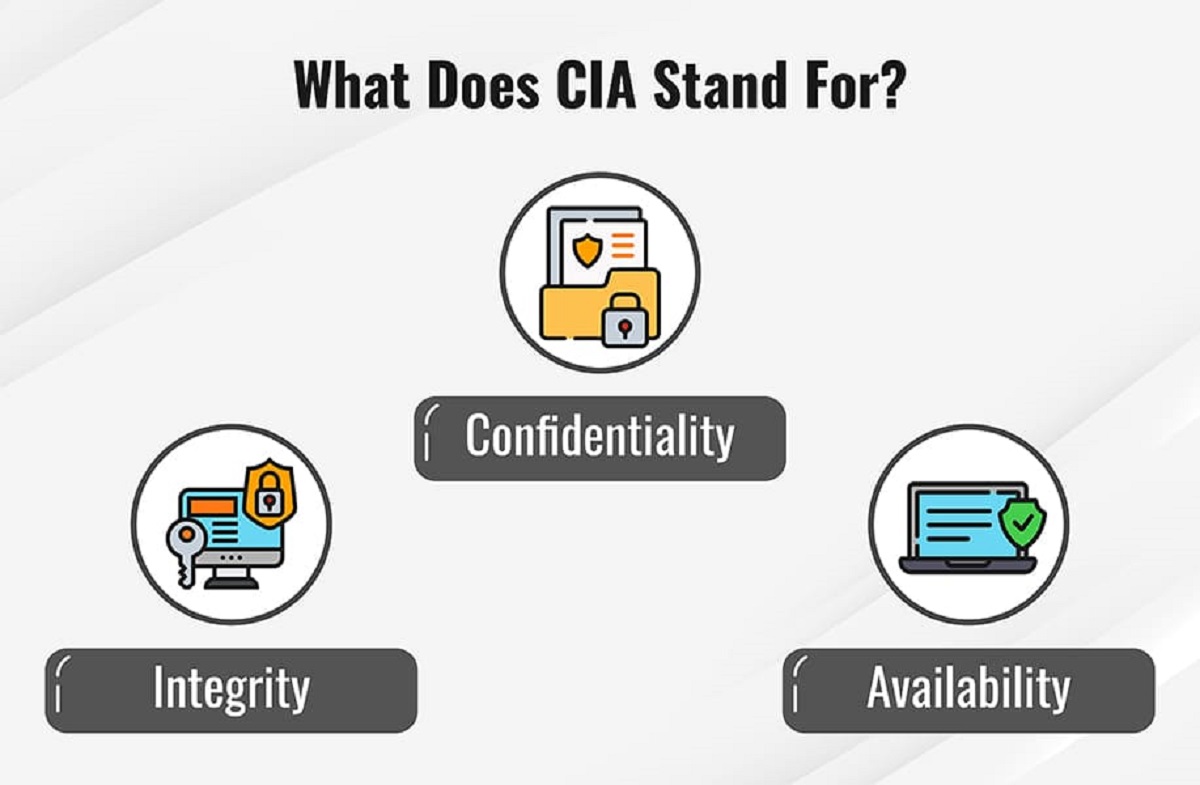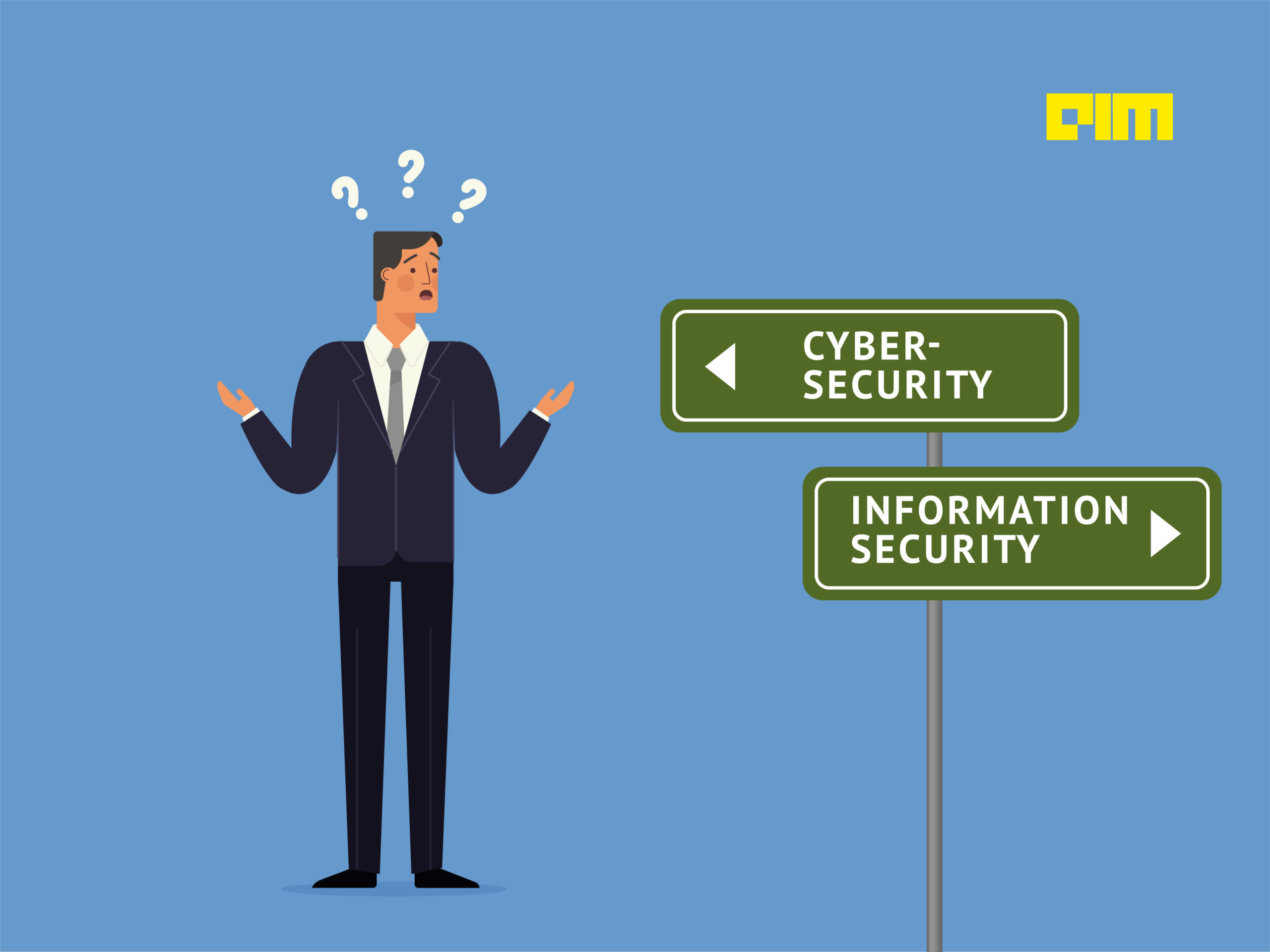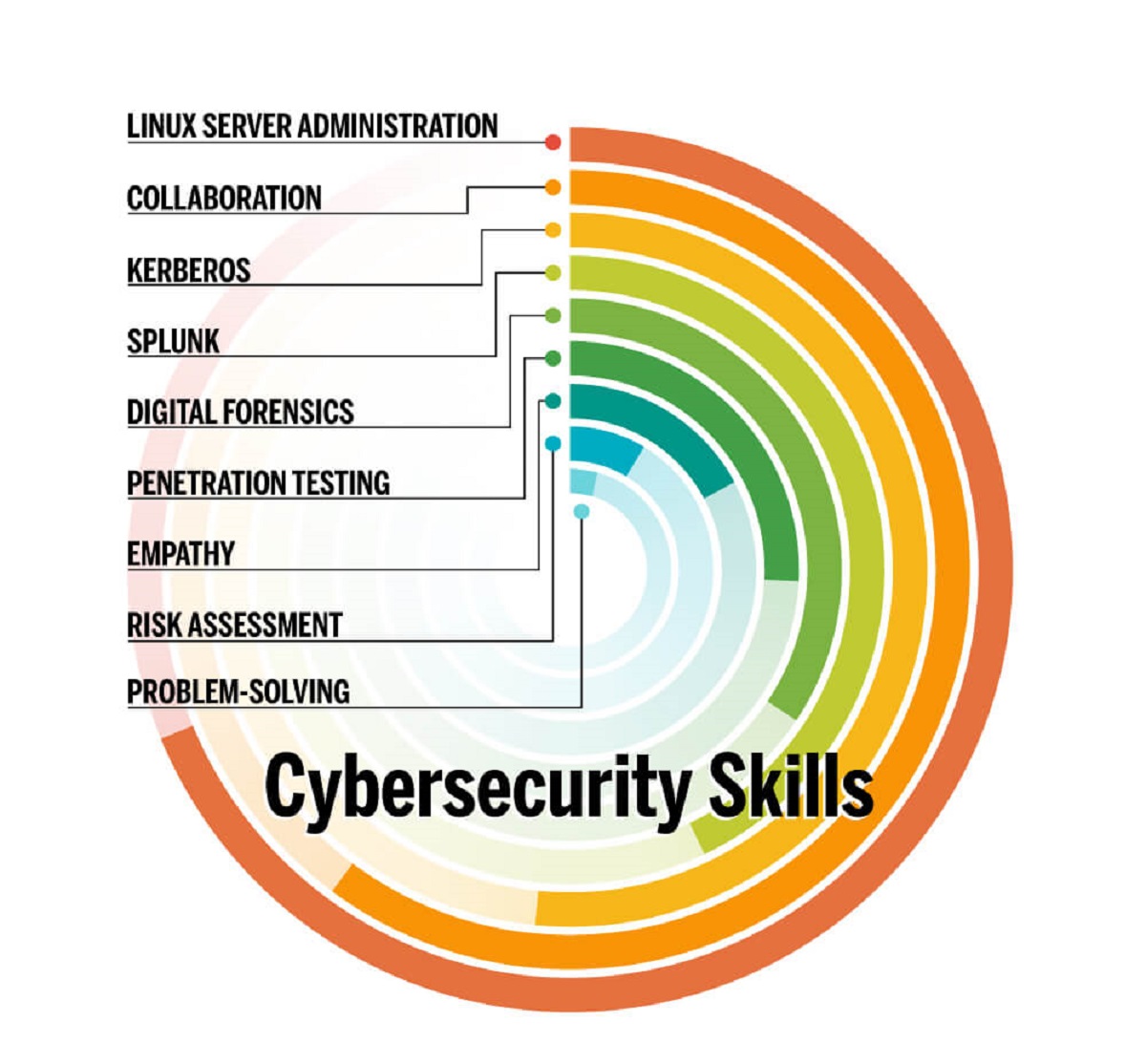What Does CIA Stand for in Cybersecurity?
In the realm of cybersecurity, CIA stands for Confidentiality, Integrity, and Availability. These three principles form the foundation of a robust and secure information security system. Understanding and implementing the CIA triad is crucial in safeguarding sensitive data and protecting against cyber threats.
Confidentiality: Confidentiality refers to the assurance that information is accessible only to authorized individuals or entities. In cybersecurity, it involves protecting data from unauthorized access, disclosure, or interception. Confidentiality is achieved through various measures such as encryption, access controls, and data classification.
Integrity: Integrity ensures that information remains accurate, reliable, and unaltered. It involves protecting data from unauthorized modification, deletion, or tampering. Maintaining data integrity is essential to ensure that information is trustworthy and free from corruption. Techniques such as checksums, digital signatures, and backups are used to maintain data integrity.
Availability: Availability refers to the accessibility and usability of information or resources when needed. It ensures that authorized users can access data and systems without disruption or delay. Availability is crucial for the smooth operation of business processes and preventing service interruptions. Measures such as redundancy, backup systems, and disaster recovery plans are implemented to ensure availability.
The CIA triad forms a balanced approach to cybersecurity, addressing different aspects of information security and providing a comprehensive defense against cyber threats. While each component plays a critical role, they are interconnected and depend on one another to achieve an effective security posture.
Organizations must prioritize the CIA triad in their cybersecurity strategies. They need to assess the sensitivity of their data, identify potential risks, and implement appropriate security controls to meet the requirements of each principle.
By implementing strong encryption protocols, organizations can protect sensitive information, ensuring confidentiality. Access controls, such as authentication and authorization mechanisms, help prevent unauthorized access, thereby maintaining confidentiality. Encryption and integrity checks, such as digital signatures, ensure data integrity. Regular backups and disaster recovery plans aid in maintaining availability and ensuring business continuity.
Overall, understanding and implementing the CIA triad is crucial in defending against cyber threats and safeguarding sensitive information. By prioritizing confidentiality, integrity, and availability, organizations can create a robust cybersecurity framework that protects their assets and supports their business goals.
Understanding the CIA Triad
The CIA triad is a fundamental concept in cybersecurity that represents the three core principles of information security: Confidentiality, Integrity, and Availability. By understanding these principles and their significance, organizations can develop effective strategies to protect their sensitive data and secure their digital assets.
Confidentiality: Confidentiality refers to the assurance that information is accessible only to authorized individuals or entities. In the context of cybersecurity, it involves keeping sensitive data safe from unauthorized access, disclosure, or interception. Confidentiality measures include encryption techniques, access controls, and data classification. By implementing robust confidentiality measures, organizations can protect their valuable information from falling into the wrong hands and mitigate the risk of data breaches.
Integrity: Integrity ensures that information remains accurate, reliable, and unaltered. It focuses on protecting data from unauthorized modification, deletion, or tampering. When information integrity is compromised, it can lead to the dissemination of false or misleading data, causing severe consequences for businesses and individuals. Techniques such as checksums, digital signatures, and validation processes are employed to ensure the integrity of data. By preserving data integrity, organizations can maintain trustworthiness and prevent the manipulation of critical information.
Availability: Availability refers to the accessibility and usability of information or resources when needed. It ensures that authorized users can access data and systems without disruption or delay. Availability is vital for the smooth operation of business processes and preventing service interruptions. Organizations employ redundant systems, backup solutions, and disaster recovery plans to ensure continuous access to crucial resources. By prioritizing availability, organizations can minimize downtime and maintain productivity, especially in the face of cyber attacks or natural disasters.
The CIA triad is interconnected, with each principle depending on the others to achieve a comprehensive security posture. For example, ensuring confidentiality and integrity requires robust access controls and encryption techniques. Availability, on the other hand, relies on maintaining the integrity of data and protecting it from unauthorized access.
Organizations must consider the CIA triad when developing their cybersecurity strategies. They need to assess the sensitivity of their data, identify potential risks, and implement appropriate security controls to meet the requirements of each principle. By doing so, they can create a strong defense against cyber threats and safeguard their valuable assets.
In summary, the CIA triad provides a framework for understanding the core principles of information security. Confidentiality, integrity, and availability form the foundation of a robust cybersecurity strategy. By implementing measures to protect confidentiality, ensure integrity, and prioritize availability, organizations can mitigate the risks associated with cyber threats and protect their sensitive information.
Confidentiality in Cybersecurity
Confidentiality is a critical aspect of cybersecurity that focuses on ensuring that sensitive information remains accessible only to authorized individuals or entities. In an increasingly connected world, organizations must implement robust measures to protect confidential data from unauthorized access, interception, or disclosure.
One of the key techniques used to achieve confidentiality is encryption. Encryption involves converting plaintext information into a coded format to prevent unauthorized individuals from reading or understanding the data. Strong encryption algorithms and protocols, such as AES (Advanced Encryption Standard), are commonly employed to secure confidential information.
Another essential aspect of confidentiality is implementing effective access controls. Organizations should enforce strict authentication and authorization mechanisms to ensure that only authorized individuals can access confidential data. This includes strong password policies, multi-factor authentication, and role-based access controls.
Data classification is an integral part of maintaining confidentiality. By categorizing information based on its sensitivity level, organizations can prioritize security measures according to the level of confidentiality required. This helps in identifying which data needs stronger protection and implementing appropriate security controls accordingly.
Training employees on the importance of confidentiality and the best practices for protecting sensitive information is crucial. Human error, such as falling victim to phishing attacks or inadvertently sharing confidential information, can significantly compromise confidentiality. Therefore, organizations should educate their staff about the risks and strategies to mitigate them.
Regularly monitoring and auditing access to confidential data helps in identifying any potential breaches and ensuring that unauthorized access is detected promptly. Intrusion detection systems, firewalls, and log analysis tools can play a crucial role in monitoring and alerting organizations about any suspicious activities that may compromise confidentiality.
Gaining the trust of customers and clients is essential for businesses. Confidentiality plays a vital role in establishing and maintaining that trust. When individuals share their personal information with an organization, they trust that it will be kept confidential. Any breach of confidentiality can have severe consequences, including legal and financial repercussions, damage to reputation, and loss of customer trust.
Organizations should strive to create a culture of confidentiality, where all employees understand and prioritize the protection of confidential information. By implementing robust encryption, access controls, data classification, training programs, and monitoring mechanisms, organizations can ensure the confidentiality of sensitive data and build trust with their stakeholders.
Importance of Data Encryption
Data encryption is a vital component of cybersecurity, playing a crucial role in protecting sensitive information from unauthorized access. In an era where data breaches and cyber threats are on the rise, encryption has become essential for organizations to safeguard their valuable data. Here are the reasons why data encryption is of paramount importance:
1. Preventing Unauthorized Access: Encryption ensures that even if an unauthorized individual gains access to the data, they cannot understand or use it without the encryption key. It acts as a safeguard, making the data useless to anyone who does not possess the correct decryption key.
2. Securing Data in Transit: Encryption plays a significant role in securing data as it is transmitted over networks or the internet. It prevents attackers from intercepting and eavesdropping on sensitive information, such as passwords, credit card details, or personal data, during transit.
3. Compliance with Regulatory Requirements: Many industry regulations, such as the General Data Protection Regulation (GDPR) and the Health Insurance Portability and Accountability Act (HIPAA), require organizations to implement data encryption as a security measure to protect sensitive information. Compliance with these regulations is crucial to avoid legal penalties and reputational damage.
4. Safeguarding Intellectual Property: Encryption helps protect valuable intellectual property, trade secrets, and proprietary information. By encrypting sensitive documents, source code, or business plans, organizations can ensure that unauthorized individuals cannot access or steal their valuable assets.
5. Enhancing Customer Trust: Encryption provides customers with peace of mind, knowing that their data is protected and their privacy is respected. It builds trust between businesses and their customers, which is crucial for maintaining long-term relationships and a positive reputation.
6. Mitigating Internal Threats: Encryption can also help prevent insider threats, where employees or individuals with authorized access might misuse or steal sensitive data. By implementing strong encryption, even authorized individuals cannot access or make sense of the encrypted data without the proper decryption key.
7. Data Backup and Disaster Recovery: When data backups are encrypted, organizations can ensure the confidentiality of their data in disaster recovery scenarios. It prevents unauthorized access to sensitive information during the restoration process.
Implementing data encryption requires the use of robust encryption algorithms and proper key management practices. It is essential to stay updated with the latest encryption standards and keep encryption keys secure to maintain the effectiveness of the encryption process.
Overall, data encryption is a critical tool in the cybersecurity arsenal. It provides an additional layer of protection, ensuring that sensitive information remains secure, even in the event of a data breach or unauthorized access. By implementing encryption, organizations can mitigate the risks associated with data breaches, comply with regulations, build trust with their customers, and protect their valuable assets.
Access Controls and Integrity in Cybersecurity
In the realm of cybersecurity, access controls and integrity measures play a vital role in protecting sensitive information from unauthorized access and ensuring the reliability and accuracy of data. By implementing robust access controls and maintaining data integrity, organizations can mitigate the risks associated with cyber threats and safeguard their valuable assets.
Access Controls: Access controls refer to the mechanisms and policies put in place to manage and restrict access to resources, systems, and data. They ensure that only authorized individuals or entities can gain access to sensitive information. Access controls can include authentication methods such as passwords, biometrics, and two-factor authentication, as well as authorization processes that define the level of access granted to individuals based on their roles and responsibilities.
Implementing strong access controls is crucial for preventing unauthorized access to confidential data. By enforcing proper authentication and authorization mechanisms, organizations can significantly reduce the risk of data breaches and unauthorized disclosure of sensitive information. Regularly reviewing and updating access controls helps organizations stay ahead of potential threats.
Data Integrity: Data integrity ensures that information remains accurate, complete, and unaltered throughout its lifecycle. It protects data from unauthorized modification, deletion, or tampering and ensures that data remains reliable and trustworthy. Maintaining data integrity is crucial, especially in sectors such as finance, healthcare, and critical infrastructure, where the accuracy and reliability of data play a vital role in decision-making processes.
Integrity measures include implementing data validation processes, checksums, digital signatures, and backup and recovery mechanisms. These measures help detect any unauthorized modifications to data and ensure that the original integrity of the information is preserved.
By implementing strong access controls and integrity measures, organizations can protect against insider threats and external attacks, enhancing the overall security posture of their information systems. It is essential to regularly review and update access controls and integrity measures to adapt to evolving threats and technological advancements.
Maintaining Data Integrity in the Digital Era
In the digital era, maintaining data integrity has become increasingly challenging due to the ever-evolving landscape of cybersecurity threats. Ensuring the accuracy and reliability of data is essential for organizations to make informed decisions and maintain the trust of their stakeholders. Here are some key strategies for maintaining data integrity in the digital era:
1. Data Validation: Implementing robust data validation processes is crucial for verifying the accuracy and reliability of data. Data validation techniques such as checksums and hash functions can detect any unauthorized modifications or corruptions in data, alerting organizations to potential integrity breaches.
2. Backups and Recovery Mechanisms: Regular backups of critical data are essential to ensure data integrity. Backups should be securely stored and regularly tested to verify their integrity. In the event of a data breach or system failure, having reliable backup and recovery mechanisms in place can help restore data to its original state.
3. Access Controls and User Permissions: Implementing proper access controls and user permissions is essential for maintaining data integrity. By ensuring that only authorized individuals have access to sensitive data and implementing role-based access controls, organizations can prevent unauthorized modifications or deletions.
4. Auditing and Monitoring: Regularly auditing and monitoring data systems and processes can help identify any unusual or suspicious activities that may compromise data integrity. Intrusion detection systems, log monitoring tools, and real-time alerts can aid in detecting and addressing potential integrity breaches promptly.
5. Secure Communication and Storage: Ensuring secure communication and storage of data is critical for maintaining data integrity. Encryption techniques, secure file transfer protocols, and secure cloud storage solutions can help protect data from unauthorized access and manipulation.
6. Employee Training and Awareness: Educating employees about the importance of data integrity and their roles in maintaining it is crucial. Training programs should focus on best practices for data handling, password security, and awareness of social engineering attacks that may compromise data integrity.
7. Regular Software Updates and Patch Management: Keeping software and systems up to date with the latest patches and security updates is essential for protecting against known vulnerabilities that may be exploited to compromise data integrity. Regular updates help maintain the integrity of the software and prevent unauthorized modifications to data.
With the increasing complexity of cyber threats, organizations must adopt a proactive approach to maintaining data integrity. This includes implementing robust data validation processes, ensuring secure backup and recovery mechanisms, enforcing access controls, monitoring for suspicious activities, securing communication and storage, providing employee training, and regularly updating software and systems.
By prioritizing data integrity and implementing these strategies, organizations can mitigate the risks associated with data breaches, unauthorized modifications, and integrity breaches, thus ensuring the accuracy, reliability, and trustworthiness of their data in the digital era.
Availability: A Crucial Aspect of Cybersecurity
In the world of cybersecurity, availability refers to the uninterrupted access and usability of information and resources when needed. It is a crucial aspect of data and system security, as it ensures that authorized users can access critical resources without disruption or delay. Availability plays a significant role in maintaining business continuity and preventing financial losses or reputational damage. Here’s why availability is a crucial aspect of cybersecurity:
1. Business Continuity: Availability is essential for the smooth operation of business processes. Downtime or service interruptions caused by cyber attacks, hardware failures, or natural disasters can significantly impact productivity, customer satisfaction, and revenue. Ensuring the availability of systems and resources helps organizations mitigate the impact of such incidents and maintain business continuity.
2. Customer Trust: Availability is closely linked to customer trust. Customers rely on organizations’ products and services to be available whenever they need them. If a website, online service, or e-commerce platform is frequently unavailable, customers may lose trust in the organization and seek alternative solutions. By prioritizing availability, organizations can enhance customer satisfaction and retain their trust.
3. Critical Infrastructure: Availability is crucial for sectors that rely on critical infrastructure systems such as energy, healthcare, transportation, and finance. Disruptions to these systems can have severe consequences, including public safety concerns and economic losses. Robust availability measures, such as redundancy and failover mechanisms, help ensure the continuous operation of critical infrastructure systems.
4. Prevention of Distributed Denial of Service (DDoS) Attacks: DDoS attacks are a common threat that aims to overwhelm a system or network, causing service disruptions and rendering resources unavailable to legitimate users. By implementing DDoS mitigation strategies, organizations can prevent or minimize the impact of such attacks and ensure the availability of their resources.
5. Disaster Recovery and Backup: Availability includes having effective disaster recovery plans and backup systems in place. In the event of a system failure or data loss, organizations need to restore operations and access to critical data as quickly as possible. Regular backups and off-site data storage help ensure that data and systems are recoverable, enabling the timely restoration of services and resources.
6. System Performance and Scalability: Availability also encompasses system performance and scalability. As organizations grow and face increased demands, they need to ensure that their systems and resources can handle the load without sacrificing availability. Scalability measures, such as load balancing and resource optimization, contribute to maintaining availability even during peak usage periods.
By implementing robust availability measures, organizations can minimize downtime, prevent financial losses, and maintain customer trust. Redundancy, disaster recovery plans, scalable infrastructure, DDoS protection, and regular backups are key components of ensuring availability. Additionally, conducting regular system assessments, monitoring for potential performance issues, and promptly addressing any vulnerabilities or weaknesses contribute to maintaining high availability in the ever-changing landscape of cybersecurity.
Defending Against DDoS Attacks
Distributed Denial of Service (DDoS) attacks pose a significant threat to the availability and performance of online services and systems. These attacks overload targeted resources, such as websites or servers, rendering them unavailable to legitimate users. Defending against DDoS attacks requires proactive measures to detect, mitigate, and prevent such threats. Here are some key strategies for defending against DDoS attacks:
1. Network Monitoring and Traffic Analysis: Implementing network monitoring tools and traffic analysis systems helps identify abnormal traffic patterns and potential DDoS attacks. By continuously monitoring network traffic, organizations can detect and respond to DDoS attacks in real time, minimizing the impact on their systems.
2. Traffic Filtering and Rate Limiting: Applying traffic filtering and rate limiting mechanisms can help mitigate the impact of DDoS attacks. By filtering out suspicious or malicious traffic and limiting the bandwidth for certain types of requests, organizations can reduce the impact of excessive traffic floods associated with DDoS attacks.
3. Content Delivery Networks (CDNs): Utilizing CDNs can help distribute traffic across multiple server locations, reducing the strain on any single server and mitigating the impact of DDoS attacks. CDNs enhance response times and provide additional capacity to absorb traffic, ensuring the availability of online services even during attacks.
4. Scalable Infrastructure: Having a scalable infrastructure that can handle high volumes of traffic is crucial for defending against DDoS attacks. By designing systems with the ability to scale horizontally across multiple servers or cloud instances, organizations can distribute the load and absorb traffic spikes more effectively.
5. DDoS Protection Services: Engaging a specialized DDoS protection service can provide an additional layer of defense against DDoS attacks. These services employ advanced traffic analysis techniques, rate limiting, and traffic scrubbing to detect and mitigate attack traffic. They can also provide real-time monitoring and response to mitigate the impact of DDoS attacks on an organization’s infrastructure.
6. Incident Response Planning: Developing an incident response plan specific to DDoS attacks is essential. This plan should outline the steps to identify, contain, and mitigate the impact of an attack. It should also include communication procedures, involving relevant stakeholders, and coordinating with DDoS protection services, if necessary.
7. Redundancy and Failover: Ensuring redundancy and failover mechanisms can help maintain availability in the event of a DDoS attack. By having duplicate copies of critical resources and failover mechanisms in place, organizations can switch to alternate systems or infrastructures when a DDoS attack occurs, minimizing disruption and ensuring continued service availability.
Defending against DDoS attacks requires a multi-layered approach that combines proactive measures, continuous monitoring, and incident response planning. By implementing these strategies, organizations can significantly minimize the impact of DDoS attacks, protect their systems and resources, and ensure the availability of their online services.
Achieving the CIA Triad: Best Practices for Cybersecurity
Implementing the CIA triad (Confidentiality, Integrity, and Availability) is crucial for building a strong and secure cybersecurity framework. To achieve the CIA triad, organizations must adopt best practices that encompass various aspects of information security. Here are some key best practices to consider:
1. Risk Assessment: Conducting thorough risk assessments helps organizations identify potential security risks and vulnerabilities. This process involves assessing the value and sensitivity of data, identifying potential threats, and evaluating the impact of security incidents. By understanding risks, organizations can implement appropriate controls to protect confidentiality, integrity, and availability.
2. Strong Access Controls: Implementing strong access controls is vital for protecting the confidentiality of data. This includes using secure authentication methods, implementing least privilege principles, and regularly reviewing and updating user permissions. Proper access controls help prevent unauthorized access and minimize the risk of data breaches.
3. Data Encryption: Implementing robust encryption for sensitive data helps ensure confidentiality. Strong encryption algorithms and protocols should be used to protect the confidentiality of data in transit and at rest. Encryption should also extend to backups and portable devices to maintain data security.
4. Patch Management: Regularly applying security patches and software updates is crucial for maintaining the integrity of systems and preventing vulnerabilities. Organizations should have a well-defined patch management process that includes timely updates and security patches for all software and systems in use.
5. Employee Training and Awareness: Educating employees about cybersecurity risks and best practices is essential. Regular training sessions should be conducted to create awareness about phishing attacks, social engineering, and the importance of maintaining data integrity and confidentiality. With proper training, employees become the first line of defense against cyber threats.
6. Incident Response Planning: Developing and regularly updating an incident response plan is critical for mitigating the impact of security incidents and ensuring business continuity. The plan should outline steps to detect, respond to, and recover from security incidents, including DDoS attacks, data breaches, or system failures.
7. Regular Backups and Testing: Regularly backing up data and testing the restoration process is crucial for maintaining availability. Backups should be securely stored, tested for integrity, and include offsite or cloud storage options. Regularly testing backup restorations helps ensure that critical data can be recovered and accessed as needed.
8. Continuous Monitoring: Implementing continuous monitoring systems and tools helps detect and respond to security incidents promptly. This includes monitoring network traffic, system logs, and implementing intrusion detection and prevention systems. Real-time monitoring enables organizations to identify potential risks and mitigate them before they escalate.
9. Regular Security Audits: Conducting regular security audits helps identify vulnerabilities and weaknesses in the system. Independent audits or penetration testing can help organizations identify potential areas of improvement, validate the effectiveness of security measures, and ensure compliance with industry regulations.
By adopting these best practices, organizations can strengthen their cybersecurity posture and achieve the CIA triad. Implementing strong access controls, robust encryption, patch management processes, employee training, incident response planning, and regular backups and testing help protect against cyber threats and ensure the confidentiality, integrity, and availability of critical information and resources.
























